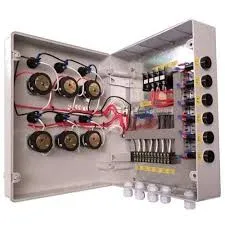Understanding Fireproof Drywall Tape A Homeowner’s Guide
In the arena of home construction and renovation, achieving safety and durability is paramount. One product that has gained significant attention in recent years is fireproof drywall tape. This specialized tape plays an important role in enhancing the fire resistance of drywall applications, making it a valuable tool for homeowners and contractors alike. In this article, we will explore what fireproof drywall tape is, its benefits, and how to properly utilize it in your projects.
What is Fireproof Drywall Tape?
Fireproof drywall tape, often made from fiberglass or other fire-resistant materials, is specifically designed for reinforcing joints in drywall installations. Unlike standard paper or mesh tape, fireproof varieties enhance the overall fire-rated performance of the wall system. They are an essential accessory for achieving codes in fire-rated assemblies, which are often required in multifamily housing, commercial buildings, and areas of increased safety concern.
The primary advantage of using fireproof drywall tape lies in its ability to prevent the spread of fire through wall joints. Building codes in many regions stipulate the use of fire-rated materials in specific applications, making fireproof drywall tape a necessity in certain construction projects.
Benefits of Fireproof Drywall Tape
1. Enhanced Safety Fireproof drywall tape is designed to prevent flames and smoke from penetrating through wall seams. This can provide additional time for evacuation during a fire, significantly enhancing safety for occupants.
2. Damage Control In the event of a fire, walls with fire-rated drywall and tape can help contain the fire to a specific area, inhibiting its movement throughout the structure. This can minimize damage and protect the integrity of the overall building.
3. Building Code Compliance Many municipalities have specific codes requiring fire-resistant properties in certain structures. Using fireproof drywall tape helps builders and homeowners meet these standards, avoiding potential legal issues and ensuring safety.
4. Ease of Use Fireproof drywall tape is straightforward to work with, making it a suitable choice for DIY enthusiasts and professionals alike. It can be applied similarly to standard drywall tape, allowing for seamless integration into your drywall installation process.
fireproof drywall tape

5. Durability Made from high-quality materials, fireproof drywall tape is designed to withstand various environmental conditions. This contributes to the longevity of the structure and reduces future repair costs.
How to Use Fireproof Drywall Tape
Using fireproof drywall tape is a process similar to that of traditional tape but requires attention to detail to ensure optimal performance. Here’s a step-by-step guide
1. Preparation Start by measuring and cutting your drywall panels to size. Ensure the edges are clean, and any dust or debris is cleared away.
2. Apply Joint Compound Before placing the tape, apply a thin layer of joint compound along the seam where the drywall sheets meet. This will help the tape adhere better.
3. Position the Tape Carefully place the fireproof drywall tape over the joint, ensuring it is properly aligned. Press it down gently to avoid air bubbles.
4. Add More Joint Compound Once the tape is in place, apply another layer of joint compound over the top, embedding the tape securely. Feather the edges to create a smooth finish.
5. Sand and Finish After the compound dries, sand it down to achieve a flat surface. You can then paint or texture the area as desired.
Conclusion
Fireproof drywall tape is an essential component in creating safer environments in homes and commercial spaces. Its ability to enhance the fire resistance of drywall installations makes it a critical choice for modern construction. As a homeowner or contractor, investing in quality fireproof drywall tape not only ensures adherence to building codes but also contributes to the overall safety of the building. By understanding its importance and proper installation techniques, you can take significant steps toward creating a more secure living or working environment.
-
XIANGFAN Rubber Tape-Ultimate Solutions for All Your Insulation NeedsNewsJun.24,2025
-
XIANGFAN Rubber Tape-Protection for Industrial and Residential ApplicationsNewsJun.24,2025
-
XIANGFAN Rubber Tape: Superior Safety and Sealing for Demanding EnvironmentsNewsJun.24,2025
-
XIANGFAN Rubber Tape: Reliable Solutions for Every Electrical ChallengeNewsJun.24,2025
-
XIANGFAN Electrical & Industrial Tape: Powering Reliability Across IndustriesNewsJun.24,2025
-
XIANGFAN Electrical & Industrial Tape: Excellence in Every ApplicationNewsJun.24,2025
